Showing Spotlights 873 - 880 of 2878 in category All (newest first):
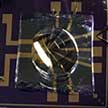 Current insulin detection methods are time-consuming with a low sensitivity, and are hence not adequate for rapid and direct detection of insulin at clinically appropriate concentrations. A novel graphene nanotechnology sensor is highly sensitive to changes in the charge distribution on and in the immediate vicinity of the graphene surface and can respond to physiological insulin concentration variations in a sensitive and rapid manner, thereby enabling real-time insulin monitoring.
Current insulin detection methods are time-consuming with a low sensitivity, and are hence not adequate for rapid and direct detection of insulin at clinically appropriate concentrations. A novel graphene nanotechnology sensor is highly sensitive to changes in the charge distribution on and in the immediate vicinity of the graphene surface and can respond to physiological insulin concentration variations in a sensitive and rapid manner, thereby enabling real-time insulin monitoring.
Aug 30th, 2017
 New work work shows the state of the art of engineering in wearable display technology. Researchers have demonstrated a passive matrix quantum dot light-emitting diode (QLED) display fully integrated with flexible electronics. They realized the visualization of meaningful information such as images, recorded healthcare data, and other messages using their display. This ultrathin and ultrasoft QLED array can be conformally laminated on human skin.
New work work shows the state of the art of engineering in wearable display technology. Researchers have demonstrated a passive matrix quantum dot light-emitting diode (QLED) display fully integrated with flexible electronics. They realized the visualization of meaningful information such as images, recorded healthcare data, and other messages using their display. This ultrathin and ultrasoft QLED array can be conformally laminated on human skin.
Aug 29th, 2017
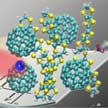 Due to their unique interlayer coupling and optoelectronic properties, van der Waals heterostructures are of considerable interest for the next generation nanoelectronics. Conventional 2D heterostructures usually are composed of two layers of opposite charge carrier type using inorganic materials. One of the challenges when creating 2D heterostructures is the painstaking stacking of the individual components on top of each other. Researchers have now found, for the first time, that there can also be charge transfer (CT) induced interfacial coupling between two different pairs of organic CT layers.
Due to their unique interlayer coupling and optoelectronic properties, van der Waals heterostructures are of considerable interest for the next generation nanoelectronics. Conventional 2D heterostructures usually are composed of two layers of opposite charge carrier type using inorganic materials. One of the challenges when creating 2D heterostructures is the painstaking stacking of the individual components on top of each other. Researchers have now found, for the first time, that there can also be charge transfer (CT) induced interfacial coupling between two different pairs of organic CT layers.
Aug 23rd, 2017
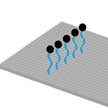 Synthetic nanomotors and DNA walkers, which mimic a cell's transportation system, are intricately designed systems that draw chemical energy from the environment and convert it into mechanical motion. Using such DNA walkers as signal amplifier for nucleic acids detection has only recently been reported. Researchers now report that they converted a DNA walker into a linear fluorescence signal amplifier on a rectangle DNA origami that can improve the detection of target molecules such as nucleic acids.
Synthetic nanomotors and DNA walkers, which mimic a cell's transportation system, are intricately designed systems that draw chemical energy from the environment and convert it into mechanical motion. Using such DNA walkers as signal amplifier for nucleic acids detection has only recently been reported. Researchers now report that they converted a DNA walker into a linear fluorescence signal amplifier on a rectangle DNA origami that can improve the detection of target molecules such as nucleic acids.
Aug 21st, 2017
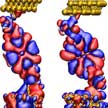 Molecular electronics aims to use small organic molecules as the active component in an electrical circuit in order to tailor functionality and achieve new levels of miniaturization with increased functionality via chemical design. Anti-aromatic molecules had been predicted decades ago to have excellent conducting properties. Now researchers have realized a molecular circuit involving an anti-aromatic molecule for the first time.
Molecular electronics aims to use small organic molecules as the active component in an electrical circuit in order to tailor functionality and achieve new levels of miniaturization with increased functionality via chemical design. Anti-aromatic molecules had been predicted decades ago to have excellent conducting properties. Now researchers have realized a molecular circuit involving an anti-aromatic molecule for the first time.
Aug 16th, 2017
 So far, bio-inspired energy conversion in solid-state nanofluidic devices has experienced three generations of evolution with the uptake of separate inspirations from biological ion channels, electric eels, and nacre. Here is an overview of the structural and functional evolution in synthetic one-dimensional and two-dimensional nanofluidic systems under the guidance of three different types of biological inspiration: the asymmetric ion-transport behaviors of biological ion channels, the strong bioelectric function of electric eels, and the layered microstructure of nacre.
So far, bio-inspired energy conversion in solid-state nanofluidic devices has experienced three generations of evolution with the uptake of separate inspirations from biological ion channels, electric eels, and nacre. Here is an overview of the structural and functional evolution in synthetic one-dimensional and two-dimensional nanofluidic systems under the guidance of three different types of biological inspiration: the asymmetric ion-transport behaviors of biological ion channels, the strong bioelectric function of electric eels, and the layered microstructure of nacre.
Aug 11th, 2017
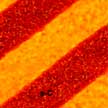 Although graphene properties and applications have already been well-discussed in the literature, it also is important to understand how 2D chemistry of graphene and graphene analogs is related to various applications. Graphene functionalization modifies the unique 2D features of graphene. In this way, the electronic and physical properties of graphene can be controlled toward the given purpose such as highly effective novel electronic device applications. Already, graphene functionalization such as adsorption, intercalation, and doping toward device applications has attracted great attention.
Although graphene properties and applications have already been well-discussed in the literature, it also is important to understand how 2D chemistry of graphene and graphene analogs is related to various applications. Graphene functionalization modifies the unique 2D features of graphene. In this way, the electronic and physical properties of graphene can be controlled toward the given purpose such as highly effective novel electronic device applications. Already, graphene functionalization such as adsorption, intercalation, and doping toward device applications has attracted great attention.
Aug 10th, 2017
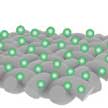 Wearable energy harvesters are greatly attractive and receive intensive research efforts in recent years, aiming at powering various emerging flexible and wearable electronics to meet the requirements of smart fabrics, motion tracking and health monitoring. Researchers now have developed a coating based on cellulose-derived hydrophobic nanoparticles and demonstrated its application as a wearable water triboelectric generator that harvests energy from water flow. This innovative fabric-based TEG has self-cleaning and antifouling properties.
Wearable energy harvesters are greatly attractive and receive intensive research efforts in recent years, aiming at powering various emerging flexible and wearable electronics to meet the requirements of smart fabrics, motion tracking and health monitoring. Researchers now have developed a coating based on cellulose-derived hydrophobic nanoparticles and demonstrated its application as a wearable water triboelectric generator that harvests energy from water flow. This innovative fabric-based TEG has self-cleaning and antifouling properties.
Aug 7th, 2017
 Current insulin detection methods are time-consuming with a low sensitivity, and are hence not adequate for rapid and direct detection of insulin at clinically appropriate concentrations. A novel graphene nanotechnology sensor is highly sensitive to changes in the charge distribution on and in the immediate vicinity of the graphene surface and can respond to physiological insulin concentration variations in a sensitive and rapid manner, thereby enabling real-time insulin monitoring.
Current insulin detection methods are time-consuming with a low sensitivity, and are hence not adequate for rapid and direct detection of insulin at clinically appropriate concentrations. A novel graphene nanotechnology sensor is highly sensitive to changes in the charge distribution on and in the immediate vicinity of the graphene surface and can respond to physiological insulin concentration variations in a sensitive and rapid manner, thereby enabling real-time insulin monitoring.
 Subscribe to our Nanotechnology Spotlight feed
Subscribe to our Nanotechnology Spotlight feed





